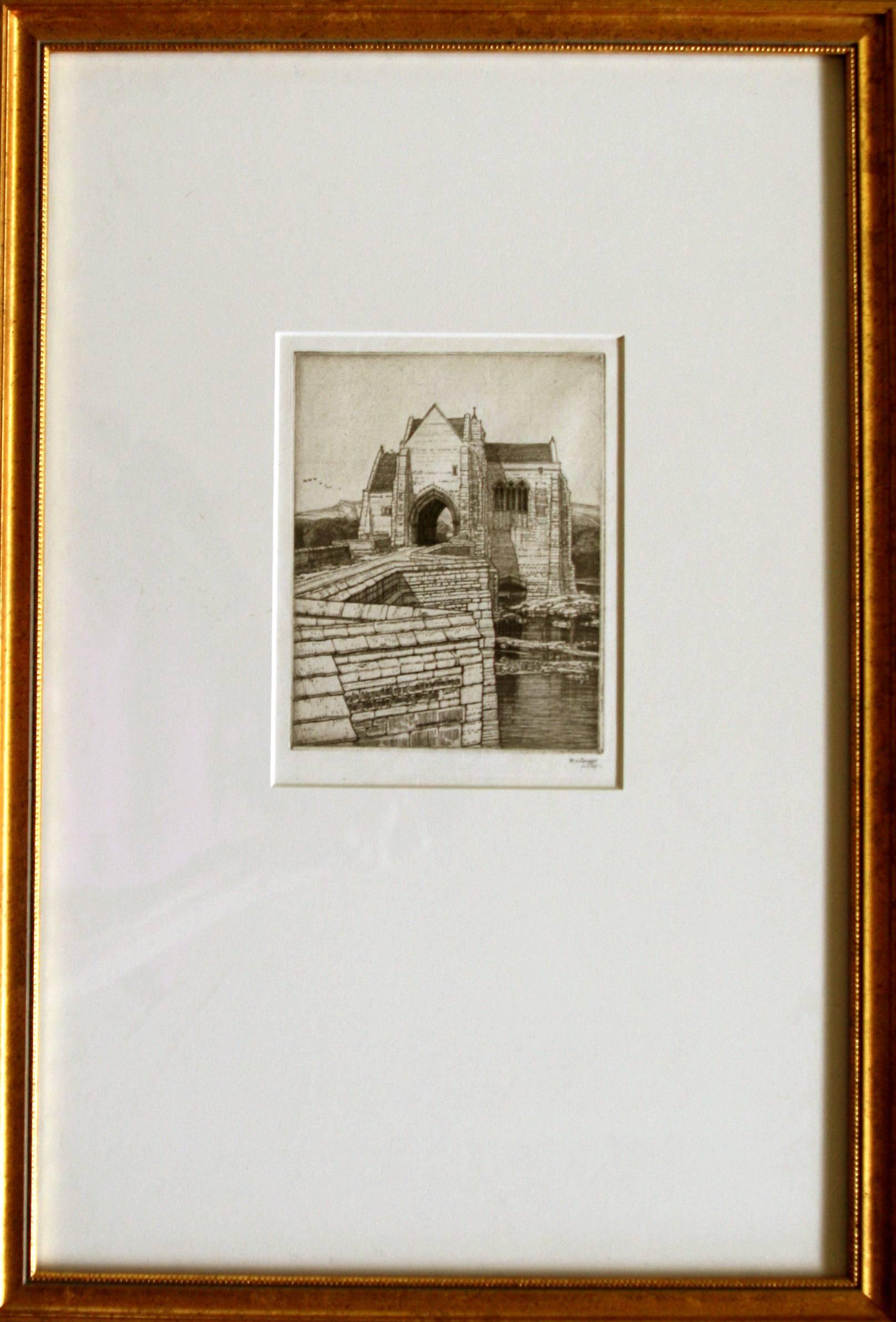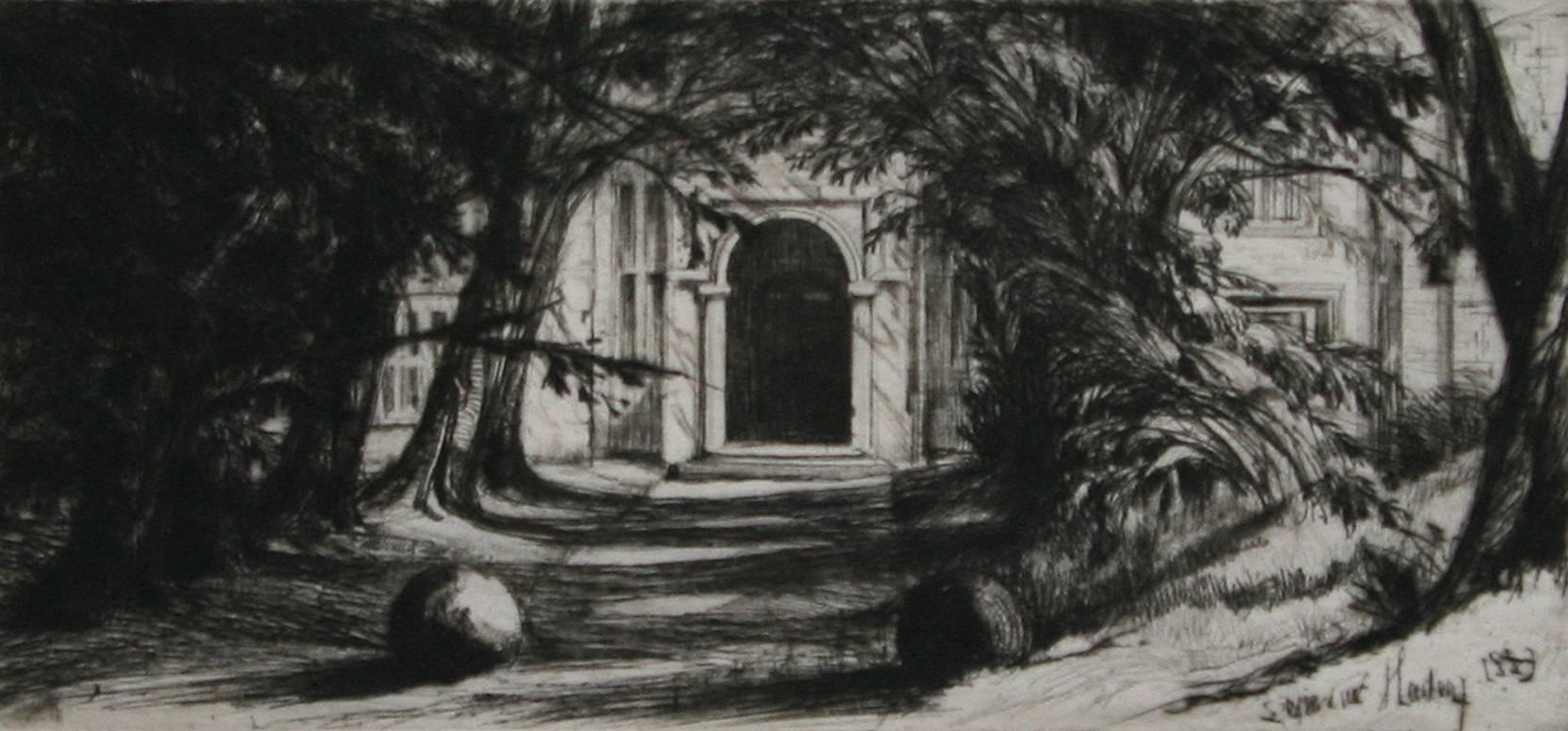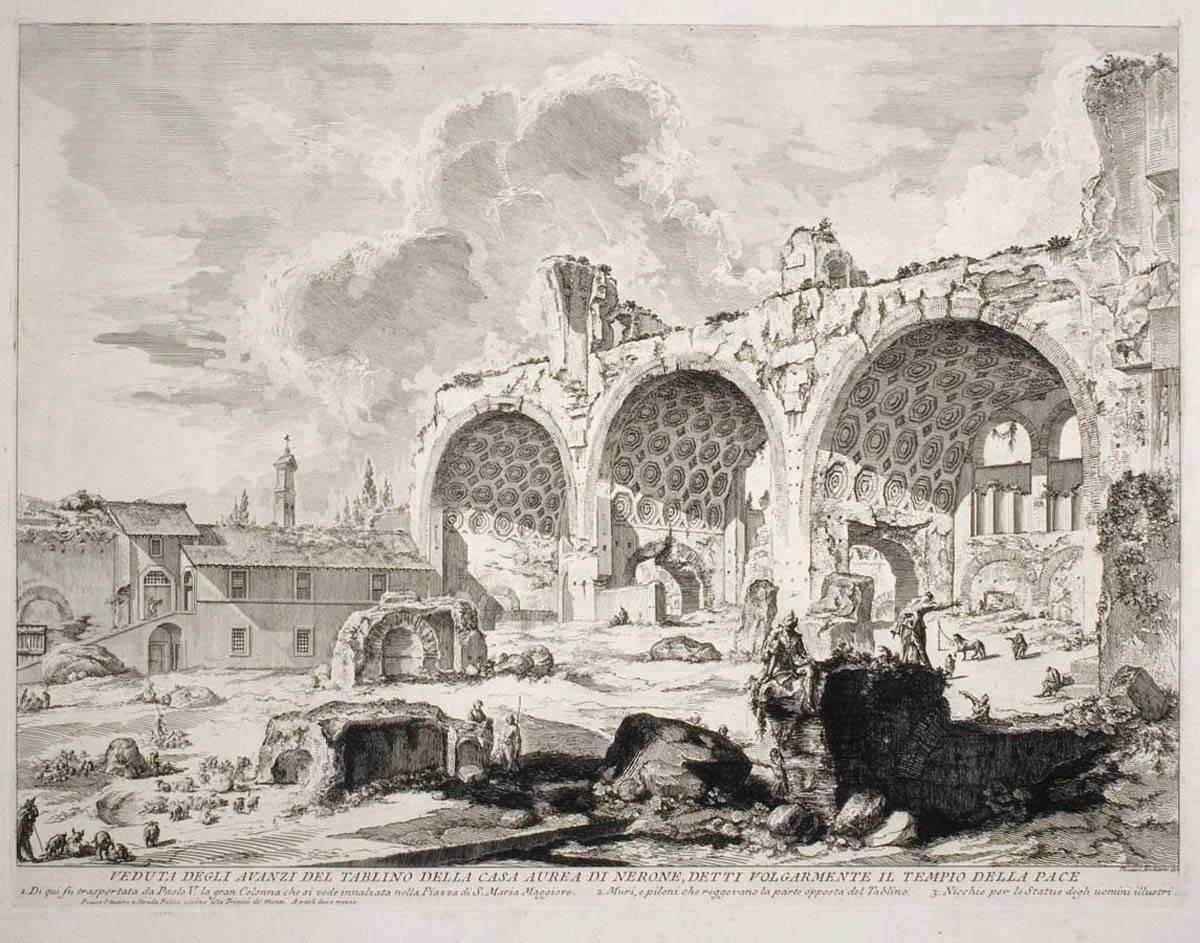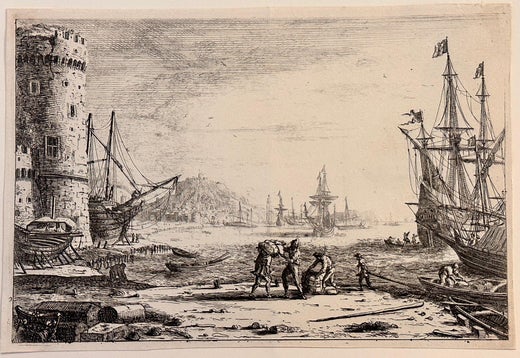Claude Lorrain"La Danse Sous Les Arbes (The Country Dance), " Etching1637
1637
About the Item
- Creator:Claude Lorrain (1604 - 1682, French)
- Creation Year:1637
- Dimensions:Height: 19.5 in (49.53 cm)Width: 22 in (55.88 cm)
- Medium:
- Movement & Style:
- Period:Mid-17th Century
- Condition:
- Gallery Location:Milwaukee, WI
- Reference Number:
Claude Lorrain
Claude Lorrain, born Claude Gellée, was a French painter, draughtsman and engraver of the Baroque era. He spent most of his life in Italy and is admired for his achievements in landscape painting. He painted a pastoral world of fields and valleys not distant from castles and towns that entered into these quiet scenes. Landscape as a subject was distinctly nontraditional and secular during this time of religious and mythical iconography, and Gellée was certainly breaking with tradition. John Constable described the artist as the most perfect landscape painter the world ever saw and declared that in Claude’s landscape, “all is lovely, all amiable, all is amenity and repose; the calm sunshine of the heart." He passed away on November 23, 1682.
- ShippingRetrieving quote...Ships From: Milwaukee, WI
- Return PolicyA return for this item may be initiated within 14 days of delivery.
- "Conversation Outside Castle, " an Etching by Jan Frans van BloemenBy Jan Frans van Bloemen (Orizzonte)Located in Milwaukee, WI"Conversation Outside Castle" is an original etching by Jan Frans van Bloemen. It depicts a number of figures just outside the majestic walls of a castle. These groups of figures are engaged in their own conversations. 9" x 6 3/4" art 21 5/8" x 19 3/8" frame Jan Frans van Bloemen (baptized 12 May 1662 - buried 13 June 1749) was a Flemish landscape painter mainly active in Rome. Here he was able to establish himself as the leading painter of views (vedute) of the Roman countryside depicted in the aesthetic of the classical landscape tradition. Van Bloemen predominantly painted classical landscapes, taking his inspiration from the Roman Campagna. His landscapes, with their recession through a series of planes, soft, warm lightning and classical and religious subject matter, drew on the examples of artists such as Claude Lorrain and Gaspard Dughet. His paintings are exquisitely imbued with that "difficult-to-define pastoral ambience" which helped to make him such a great painter in the eyes of his contemporaries. The technique and subjects of the work of Jan Frans van Bloemen are also related to painters such as Jan Asselijn...Category
18th Century Old Masters Landscape Prints
MaterialsEtching
- "Mother & Child Near Statues, " Etching by Jan Frans van Bloemen (Orizzonte)By Jan Frans van Bloemen (Orizzonte)Located in Milwaukee, WI"Mother & Child Near Statues" is an original etching by Jan Frans van Bloemen. It depicts two figures, a mother and child pair, next two two classical statues. There are other figures in this park-like environment. 9 1/4" x 6 3/4" art 21 5/8" x 19 3/8" frame Jan Frans van Bloemen (baptized 12 May 1662 - buried 13 June 1749) was a Flemish landscape painter mainly active in Rome. Here he was able to establish himself as the leading painter of views (vedute) of the Roman countryside depicted in the aesthetic of the classical landscape tradition. Van Bloemen predominantly painted classical landscapes, taking his inspiration from the Roman Campagna. His landscapes, with their recession through a series of planes, soft, warm lightning and classical and religious subject matter, drew on the examples of artists such as Claude Lorrain and Gaspard Dughet. His paintings are exquisitely imbued with that "difficult-to-define pastoral ambience" which helped to make him such a great painter in the eyes of his contemporaries. The technique and subjects of the work of Jan Frans van Bloemen are also related to painters such as Jan Asselijn...Category
18th Century Old Masters Landscape Prints
MaterialsEtching
- "Figures Outside the Monastery, " Original Etching by Jan Frans van BloemenBy Jan Frans van Bloemen (Orizzonte)Located in Milwaukee, WI"Figures Outside the Monastery" is an original etching by Jan Frans van Bloemen. It depicts people on the path to a church. 7" x 10 1/4" art 19 1/4" x 22 5/8" frame Jan Frans van Bloemen (baptized 12 May 1662 - buried 13 June 1749) was a Flemish landscape painter mainly active in Rome. Here he was able to establish himself as the leading painter of views (vedute) of the Roman countryside depicted in the aesthetic of the classical landscape tradition. Van Bloemen predominantly painted classical landscapes, taking his inspiration from the Roman Campagna. His landscapes, with their recession through a series of planes, soft, warm lightning and classical and religious subject matter, drew on the examples of artists such as Claude Lorrain and Gaspard Dughet. His paintings are exquisitely imbued with that "difficult-to-define pastoral ambience" which helped to make him such a great painter in the eyes of his contemporaries. The technique and subjects of the work of Jan Frans van Bloemen are also related to painters such as Jan Asselijn, Thomas Wyck...Category
18th Century Old Masters Landscape Prints
MaterialsEtching
- "Figures at the Obelisk, " Original Etching Landscape by Jan Frans van BloemenBy Jan Frans van Bloemen (Orizzonte)Located in Milwaukee, WI"Figures at the Obelisk" is an original etching by Jan Frans van Bloemen. It depicts two people conversing in front of a monument. Behind them, an expansive landscape sprawls. 9 1/4" x 6 3/4" art 21 3/4" x 19 3/8" frame Jan Frans van Bloemen (baptized 12 May 1662 - buried 13 June 1749) was a Flemish landscape painter mainly active in Rome. Here he was able to establish himself as the leading painter of views (vedute) of the Roman countryside depicted in the aesthetic of the classical landscape tradition. Van Bloemen predominantly painted classical landscapes, taking his inspiration from the Roman Campagna. His landscapes, with their recession through a series of planes, soft, warm lightning and classical and religious subject matter, drew on the examples of artists such as Claude Lorrain and Gaspard Dughet. His paintings are exquisitely imbued with that "difficult-to-define pastoral ambience" which helped to make him such a great painter in the eyes of his contemporaries. The technique and subjects of the work of Jan Frans van Bloemen are also related to painters such as Jan Asselijn, Thomas Wyck...Category
18th Century Old Masters Landscape Prints
MaterialsEtching
- "Near Tottenham Midd., " Original English Landscape Etching by John Thomas SmithBy John Thomas SmithLocated in Milwaukee, WI"Near Tottenham Midd." is an original etching by John Thomas Smith at the top right of the image, reading "Drawn & Etch'd by J. T. Smith, Engraver of the Antiquities of London & Envi...Category
1790s Old Masters Landscape Prints
MaterialsPaper, Etching, Ink
- "English Country Fisherman by the Cottage, " Original Etching by J. T. SmithBy John Thomas SmithLocated in Milwaukee, WI"English Country Fisherman by the Cottage" is an original etching by John Thomas Smith. The miniature etching features a country cottage with a thatc...Category
1790s Old Masters Landscape Prints
MaterialsPaper, Etching, Ink
- Adriaen Frans Boudewyns After Adam-François Van Der Meulen, EtchingLocated in Cheltenham, GBThis 17th-century engraving by Flemish draughtsman Adriaen Frans Boudewyns (1644-1719) is after a painting by Adam-François van der Meulen (1632-1690). ...Category
17th Century Old Masters Landscape Prints
MaterialsPaper, Etching
- St. Botolph's Bridge (No. 1).By Frederick Landseer Griggs, R.A., R.E.Located in Storrs, CTSt. Botolph's Bridge (No. 1). 1917. Etching. Comstock catalog 19 state iv. 5 3/4 x 4 1/2 (sheet 9 3/8 x 8 5/8). Edition 50 in this state (total 70 proofs in 4 states.) A rich impres...Category
Early 20th Century Old Masters Landscape Prints
MaterialsEtching
- Breaking up of the Agamemnon, No 1By Sir Francis Seymour Haden, R.A.Located in Storrs, CTEtching and drypoint. Schneiderman 133.v/xi. 7 3/4 x 16 3/8 (sheet 9 1/4 x 17 1/2). A rich impression with plate tone printed in black/brown in on antique cream wove paper. Signed in...Category
Mid-19th Century Old Masters Landscape Prints
MaterialsDrypoint, Etching
- Mytton HallBy Sir Francis Seymour Haden, R.A.Located in Storrs, CTMytton Hall. 1859. Etching and drypoint. Schneiderman catalog 19 state .iii/v. 4 13/16 x 10 5/16 (sheet 5 3/4 x 10 15/16). As published in Études à l'eau-forte XXIV. Illustrated: Guichard, British Etchers, 1850-1940. An extremely rich impression printed on fine laid paper. Signed in the plate. Housed in a 16 x 20-inch archival mat. Mytton Hall is a fifteenth century mansion house situated on the River Ribble, at Whalley near Blackburn, Lancashire. Haden used to stay there when he went salmon fishing. R. Gutekunst, the dealer who inherited the rights to sell all of Francis Seymour Haden's remaining prints upon his death, noted on the front of his catalogue in July 1911: "It may be useful to add that those impressions of Sir Seymour Haden's early and rare etchings, which were published in portfolio form in Paris in 1865-66, under the title Études à l'eau-forte have, with the exception of one or two sets, never been signed in autograph by Sir Seymour, and do not, of course, bear any stamp of any kind." Although Gutekunst had impressions of the majority of Haden's works for sale, he had no remaining impressions of Mytton Hall. Henry Taylor...Category
Mid-19th Century Old Masters Landscape Prints
MaterialsDrypoint, Etching
- View of the Tiber with Country LandscapeBy Jan Dirksz BothLocated in Chicago, ILEtching on paper with Schriftband watermark. Reference: Bartsch 7 III/IV (from VI). A very fine, early impression. Printed with the name of the artist, but before the addition...Category
15th Century and Earlier Old Masters Landscape Prints
MaterialsEtching
- The Basilica of ConstantineBy Giovanni Battista PiranesiLocated in Chicago, ILA very fine impression of the 3rd State, still with the address and price which were eliminated in the following 4th state. The presence of the address and price confirms that this ...Category
18th Century and Earlier Old Masters Landscape Prints
MaterialsEtching






